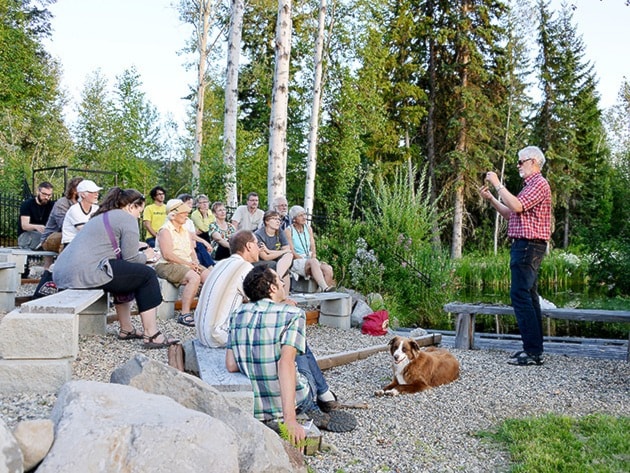“This household supported by lichen dollars.”
That's the bumper sticker that Trevor Goward would like to have.
The curator of lichens for the UBC Herbarium and a former longtime Wells Gray Park naturalist, Goward gave a presentation on lichens to an audience of close to 20 people at his Upper Clearwater home, Edgewood Blue, on Friday evening, Aug. 1.
The talk was part of the Wells Gray Rocks series of events being held this summer to celebrate the 75th anniversary of Wells Gray Park.
Some of those attending were also taking part in a workshop on lichens over the weekend.
“Some people are astounded that other people will pay money to learn about lichens,” Goward said.
In fact, lichens are important factors in many ecosystems and are often sensitive if anything is wrong in those ecosystems.
“Lichens are good indicators of certain kinds of pollution but not others,” Goward said.
Radioactivity is one example of pollution that lichens are not sensitive to.
Studies have shown that radioactivity strong enough to kill just about everything, including trees, will not affect lichens.
Some sulphur compounds, on the other hand, will “change the world” for lichens, because they can change the acidity of the environment.
Goward noted that the largest literature in lichenology is about pollution.
He suggested that this was because most lichenologists work in universities, which are in cities, and so studying pollution is easy to do.
Lung lichens, for example, are still common here but have disappeared from many parts of Europe because of acidification and eutrophication.
Lichens live by absorbing things from the air, including metals.
During the time when the United States and the USSR tested nuclear weapons in the atmosphere, the Inuit in the Arctic were the people most affected by radioactive fallout.
This was because the lichen concentrated the radioactive particles from the air and then were eaten by caribou, which were then eaten by the Inuit.
During the mid-1980s Goward did a major survey of metal concentrations in lichen near Kamloops to measure the effect of open pit mines in the area.
More recently, a controversy has developed about a proposal to build a new mine within city boundaries.
Goward wanted to do a comparison but someone in the Ministry of Environment had thrown away all the samples from his earlier survey.
Hair lichens in this area are an important source of food for mountain caribou, he said.
They require an acidic habitat to grow, which they usually find on conifers.
“People see lichens growing on dying trees and they assume they are killing them. Actually, it's the other way around,” Goward said. “First the trees have to start dying, then the lichen can grow on them.”
“As the forest ages, lichen become more abundant,” he said. “That's why mountain caribou need old forest. By the time you get to 150-year-old spruce ... now you're talking.”
